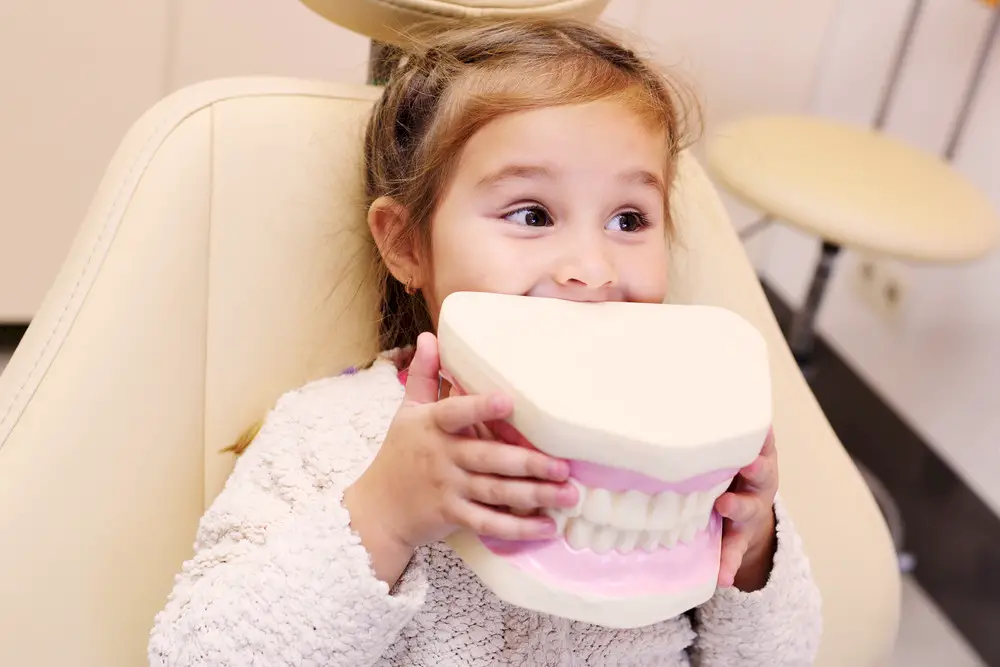Blog Summary: Navigating dental insurance in California can feel complex, but understanding the basics makes it easier to protect your family’s smiles:
- Dental insurance works like health insurance: you pay a monthly premium and share costs through deductibles, copays, or coinsurance.
- Plans usually include preventive care at 100% coverage, with cost-sharing for basic and major procedures.
- PPO, HMO, and indemnity plans are the three main types of dental insurance.
- Key terms like premiums, deductibles, copays, coinsurance, annual maximums, and waiting periods are essential to know.
- Most plans cover preventive services and fillings, but braces, implants, and cosmetic treatments are often excluded or partially covered.
- Pediatric coverage often lasts through age 18, with some plans extending to age 26 for dependents.
- Proactive understanding of your plan helps avoid surprise bills and ensures your family gets the care they need.
Navigating the world of dental insurance can seem like an impossible task as an individual, let alone a family. But it doesn’t have to be.
Taking the time to understand the complex web of types of insurance, coverages, and exclusions, and common terms is worth it. After all, care that ensures the health of you and your little ones is what you’re hoping to have covered, and taking care of those we love is almost always worth the effort!
In that spirit, we’ve created this guide with the objective of helping you understand how dental insurance in California works, what it covers and what it doesn’t, and how to make the most of your benefits.
Whether you’re new to dental insurance or are just looking for a refresher, we hope you’ll find this handy guide to dental insurance in CA helpful!
How Does Dental Insurance Coverage Work?: Breaking Down the Basics
There are a ton of insurers out there, and each provides various types of coverage. It can be overwhelming to navigate. But we mention this primarily to note that you might hear things about dental insurance from well-meaning friends or family members in other states or with different plans (even from the same insurer). But their coverage is probably not the same as yours.
With that out of the way, let’s take a step back and discuss what dental insurance is and how it works in California.
Dental insurance works similarly to health insurance. You pay a monthly premium that keeps your coverage active. With active coverage, when you make a dentist’s appointment, all or part of that appointment is either fully covered, covered partially, or, in some cases, not covered. When you pay part, you usually do so through a copayment, deductible, or coinsurance. Many plans also come with an annual maximum, or total amount the insurance company will pay per year.
There are three main types of dental insurance plans, plus discount dental plans/dental savings plans, which are often a good option for those who are uninsured or cannot obtain dental insurance, but are not technically a type of dental insurance.
Here, we’ll focus on the three main types of insurance only. Here’s what you should know about each, generally speaking:
- PPOs/DPPOs: Dental preferred provider organization plans allow those who sign up for them to choose between a variety of dentists and dental specialists, making them a popular choice for those who want flexibility.
- HMOs/DHMOs: Dental health maintenance organization plans include only specific dentists under contract with the insurance company to offer services at set rates, making them a popular choice with those who want more monthly savings and don’t mind some rigidity.
- Dental Indemnity Insurance: With this type of coverage, insureds pay dentists directly instead of going through insurance first. Then, they submit claims to receive compensation later. These plans aren’t as popular due to the more involved claims process.
For more high-level information on dental insurance, we recommend the National Association of Insurance Commissioners’ (NAIC) consumer insight guide.
Pro Tip: It may be helpful to remember that the main goal of all types of dental insurance is to cover some mix of preventative dental care, basic dental care, and major dental care.
6 Key Dental Insurance Terms to Know
How does a deductible work for dental insurance? Do you know the difference between a copay and coinsurance? We recently mentioned a few terms when explaining dental insurance, and now we’d like to back up and explain them in greater detail:
- Premium: The recurring payment you make to maintain your dental insurance.
- Deductible: The amount you’re responsible for paying for your dental care before your insurance benefits kick in. For example, if your deductible is $50, you’ll pay the first $50 of your dental costs each year.
- Copayment: A fixed amount you pay for a specific service at the time of your visit. For instance, you might pay a $20 copay for a routine cleaning, with your insurance covering the rest.
- Coinsurance: The portion of the cost you’re responsible for after you’ve met your deductible. It’s often expressed as a percentage, such as paying 20% of the cost for a filling while your insurance covers the remaining 80%.
- Annual Maximum: The most your dental insurance will pay for your care within a single year. After this limit is reached, you are responsible for any additional costs.
- Waiting Period: The amount of time you must wait after enrolling in a plan before certain treatments are covered. For example, some plans might have a 6-12 month waiting period for major procedures like crowns or braces.
Looking for other definitions? Check out this exhaustive NAIC glossary of insurance terms.
What Does Dental Insurance Usually Cover for Kids & Families?
Most – but not all – dental plans are designed to encourage preventative care since doing so is associated with less need for costly repairs later down the line.
Why? It costs insurance companies less money in the long run. (It also generally costs individuals – even those uninsured – less in the long run to get preventative care done routinely before small issues turn into issues that cost thousands).
That said, here’s an overview of what most plans cover.
Note: This is not meant to be exhaustive, since plans vary greatly in their coverages, exclusions, and amounts. So if in doubt, always:
- Review your insurance’s Summary of Benefits and Coverage (SBC)
- Log in to your insurer’s website or app
- Call your insurance provider directly
- Ask your dentist’s office! (At The Super Dentists, our Super Agents are happy to help decode your plan)
What’s Typically Covered
- Preventive Care (Usually 100% Covered): This includes things like cleanings, exams, X-rays, and fluoride treatments.
- Basic Procedures: Expect coverage for fillings, extractions, and space maintainers.
- Some Major Treatments: Depending on your plan, you may also have coverage for root canals and crowns.
What’s Not Always Covered or Only Partially Covered
- Braces and Other Orthodontic Treatments: Coverage for these can vary widely and may require an extra or supplemental plan.
- Cosmetic Procedures: Things like teeth whitening are often not covered.
- Dental Implants: These are frequently excluded, or only partially covered, even with higher-tier plans.
Wondering how much care costs without insurance, or dubious about the benefits of preventative care? Our blog post “How Much is a Dental Cleaning Without Insurance?” covers both topics and is worth a read.
In Conclusion
Dental insurance can help you save money, decrease stress over bills, and keep your whole family in tip-top health! Don’t wait for a surprise bill or avoid going to the dentist because you thought something wasn’t covered. Instead, seek to understand your coverage, ask questions, and stay proactive about regular visits!
The Super Dentists is in-network with all major insurance providers. Still need help? Visit our insurance page, check out our additional FAQs below, or reach out anytime for assistance!
Dental Insurance FAQs
Does dental insurance cover braces for children?
Some do. Many plans offer partial coverage, often through an orthodontic rider, and may have lifetime benefit limits.
Does dental insurance cover dental implants?
Typically, no. Implants are often considered elective, though some premium or supplemental plans may offer assistance.
What is the age limit for pediatric dental coverage?
Most plans provide coverage for children up to age 18, and some extend this to age 26 for dependents.
How does dental insurance for children function?
Preventive care is usually fully covered, while other treatments involve cost-sharing. Plans like those on Covered California have a limit on out-of-pocket costs for children.
How does a dental insurance deductible operate?
It’s the annual amount you pay for your care before your insurance begins to contribute. Preventive services are usually exempt from the deductible.












